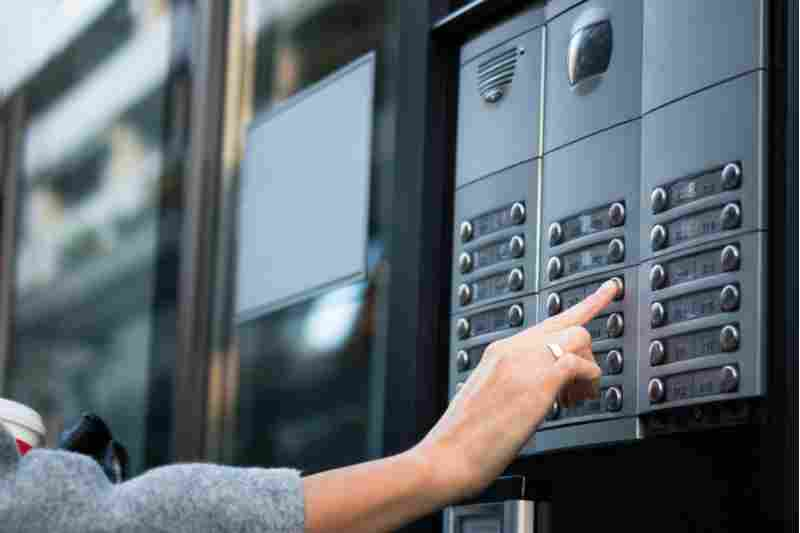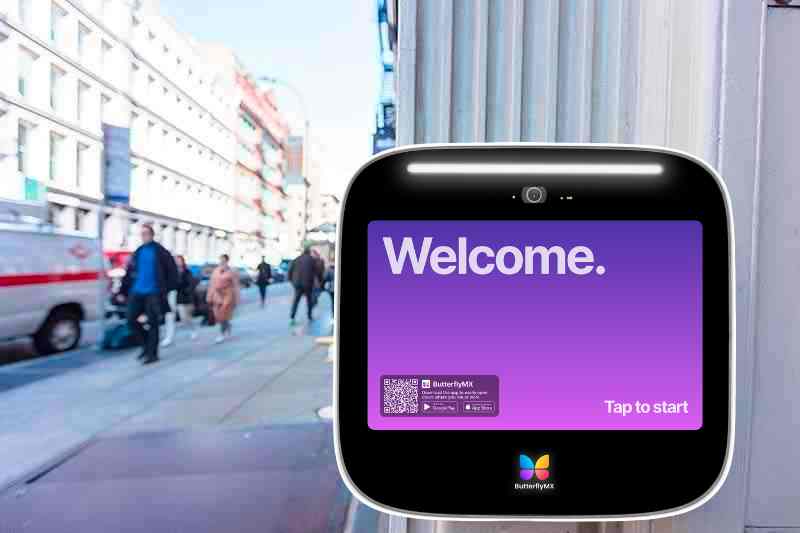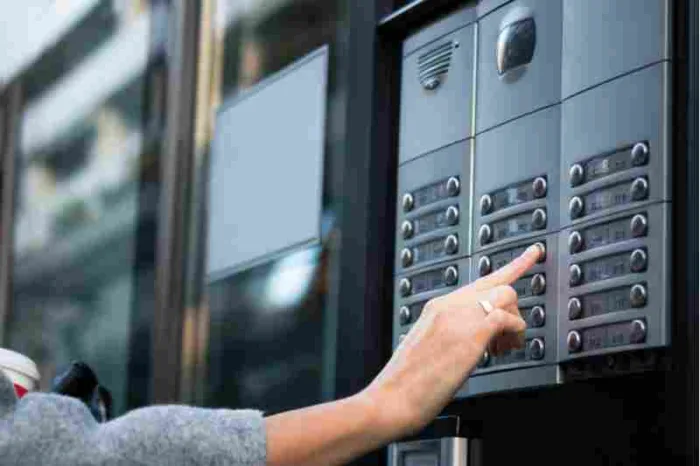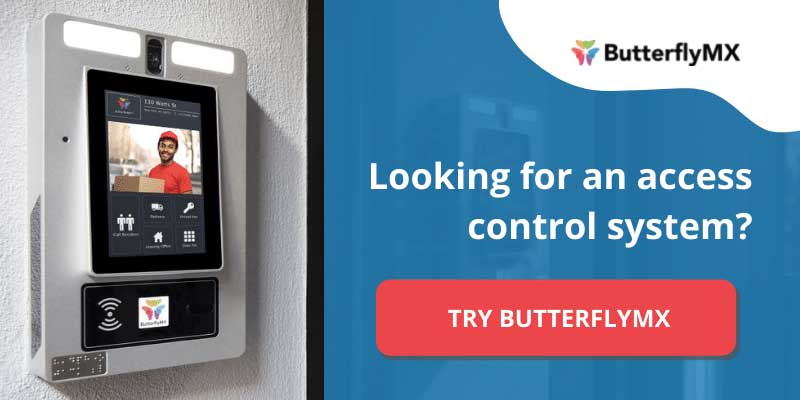Key takeaways
- A basic access control system allows you to manage access for tenants and visitors. However, it may lack some of the features your tenants expect out of a modern access system.
- When you’re deciding how to manage your security access control system, you can choose between three sets of rules: discretionary, role-based, and rule-based access.
- For an option beyond basic access control, consider cloud-based, integration-friendly systems like ButterflyMX.

Every property manager knows that the basics of access control include security, convenience, and ease of use. But what’s the best way to provide that to your tenants?
In this post, we explain what a basic access control system is. Then, we outline what the three types of access control are. Finally, we’ll help you pick an access system that does more than just fulfill basic needs.
This post covers:
- What is a basic access control system?
- What are the three types of access control?
- Benefits of access control
- The best access control system for you
- The future of access control: ButterflyMX
What is a basic access control system?
A basic access control system is a collection of equipment and organizational practices that allows you to grant convenient access to verified tenants and their guests.
Your access control equipment list might include:
- Intercoms
- Smart locks
- Keypads
- Windshield tags
- Vehicle tag readers
However, many properties find that a bare-bones, basic system doesn’t fit their needs. A property might have a variety of intercom hardware. However, making each piece of equipment work in concert means you have to go beyond the basics.
You may be managing a residential or commercial property. Regardless, you’re sure to deal with a constant stream of delivery couriers, personal visitors, maintenance workers, and service providers. So, how do you make sure each visitor only accesses the part of the building they need to?
Managing and editing permissions for visitors is a complicated task. To fit a property’s more complex needs, access control companies have developed new technologies and new organizational frameworks. These help keep properties everywhere secure yet easy to access.
A basic access system might depend on analog wiring and a paper-and-pencil system to keep track of visitors. In contrast, future-forward systems can use smartphone apps and wireless connections to easily and securely grant access to visitors.
Watch how ButterflyMX works:
What are the three types of access control?
So, what’s the difference between a basic access control system and a more complex one?
A clear difference is that there are a few different sets of rules that you can use to manage access. To differentiate, here’s a quick rundown of the most common models of access control.
The three types of access control are:
1. Discretionary access control
The discretionary model allows multiple administrators to manage the same door access control system. This means that multiple people can add or remove tenants and edit permissions. Typically, this includes the property manager or owner and a few trusted staff members.
Pro tip: Discretionary access control is a good fit for large properties where there are a lot of staff members in charge. However, be warned that you’ll have to manually set everybody’s permissions, which could be time-consuming.
2. Role-based access control
In role-based access control, people are assigned a specific role that has its own permissions. For example, you can create a “maintenance person” role that has access to boiler rooms, data centers, and other sensitive areas. Meanwhile, you can create a “resident” role that doesn’t need access to these service areas. However, they do have access to other spaces, like common areas or gyms.
Pro tip: Role-based access is good for properties where everybody’s role on the property is predetermined. Further, it’s great if you don’t need to make constant edits to a specific person’s permissions.
3. Rule-based access control
Rule-based access control automatically changes people’s access permissions depending on rules that you can set and change.
These attributes might include:
- Location
- Time of day
- Job title
For example, you want to close off access to an amenity space at a certain time. If so, you can apply a rule that ensures that nobody can unlock the gym doors after closing time.
What is the most common access control?
The most common access control system is role-based access control. With RBAC, it’s simple to assign each person a specific role. So, RBAC allows you to perform door access control system basic tasks, like cordoning off high-security areas to managerial roles.

Benefits of access control
From apartments to businesses to daycares and campuses, the advantages of door access control systems extend far beyond merely locking and unlocking doors.
Access control empowers you to manage and monitor who gains entry to your property, ensuring a seamless blend of security, convenience, and efficiency.
Here are some benefits of implementing a secure access control system at your property:
- Boost safety. Role-based access control restricts access to hazardous areas, promoting safety by preventing unauthorized personnel from entering sensitive locations.
- Create audit trail. Access control systems create audit trails that track who accessed specific areas or amenity spaces. As a result, this makes it easier to investigate security incidents using access control activity.
- Customized access permissions. Role-based access control allows administrators to assign different access levels to individuals or groups, ensuring that only employees have access to the resources necessary for their roles.
- Remote access management. Because access control systems can be managed remotely, administrators can adjust access permissions from anywhere.
- Emergency response functionality. In case of emergencies, access control systems lock down or unlock specific areas, helping to manage and respond to critical situations more effectively.
Challenges of access control
- Dependent on technology. Modern access control systems are reliant on technology. So, they can be susceptible to technical glitches, system failures, or power outages that may compromise security.
- Staff must be trained. Employees may require training to use the new access control software effectively, which can be time-consuming.
- Resistance from tenants. Tenants may resist the adoption of access control systems due to perceived inconvenience or technical difficulties.
- Can be complex for older buildings. Older buildings or facilities may have compatibility issues when trying to implement modern access control systems.
The best access control system for you
No matter which access control model you choose, one thing is for certain: You need the right equipment to make these changes easily and quickly.
The best access control system is an electronic, integrated access system like ButterflyMX.
One of our most popular features is our system of integrations — and it’s easy to see why. For instance, consider an event that every property manager is familiar with, such as adding a new tenant to your entry control system.
Adding a new tenant to a non-integrated system is a nightmare, especially if you’re depending on multiple types of credential readers.
Across your entire property, the components of your access control system might include anything from:
- Keypads
- Smart locks
- Front gate intercom
And you’d have to manually add that tenant to every single device on your property.
Leaving that new tenant off of even one device could create tons of inconveniences. And when that tenant moves out, leaving their credentials on one device could create a security risk.
The future of access control: ButterflyMX
In comparison, adding a tenant to a ButterflyMX building or secured space couldn’t be easier. Our powerful management dashboard allows you to immediately update every keypad, vehicle sticker, and reader on your property with ease.
What’s more, ButterflyMX access control software integrates with dozens of other smart lock brands to extend our access control ecosystem throughout your entire building. You can add ButterflyMX to your existing systems to ensure that your tenants never suffer any interruptions or delays.
Your tenant will certainly appreciate ButterflyMX’s array of features. Further, they’ll be able to open the door or gate with their smartphones, even if they’re across town. Plus, tenants can issue Delivery Passes to drivers.
With the Delivery Pass, tenants can text drivers a PIN or QR code, allowing the courier secure access to the building — while ensuring that staff members don’t get tied up in signing for packages or directing drivers to the correct location.







